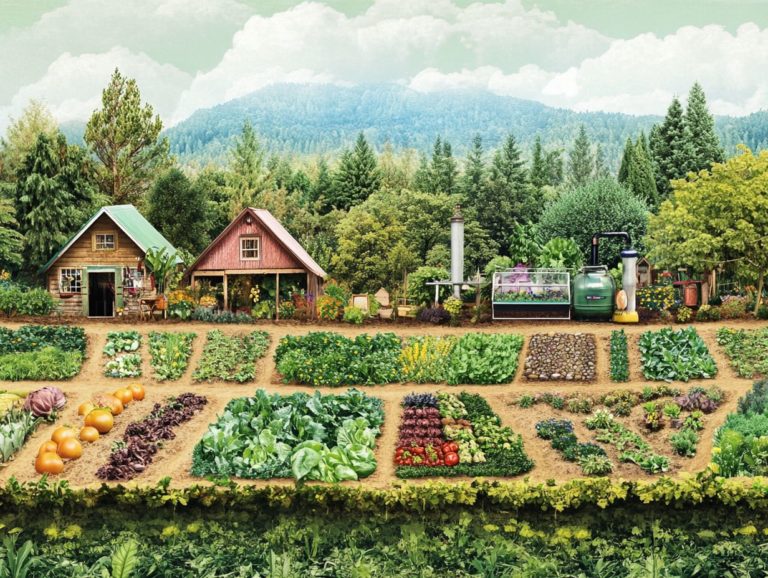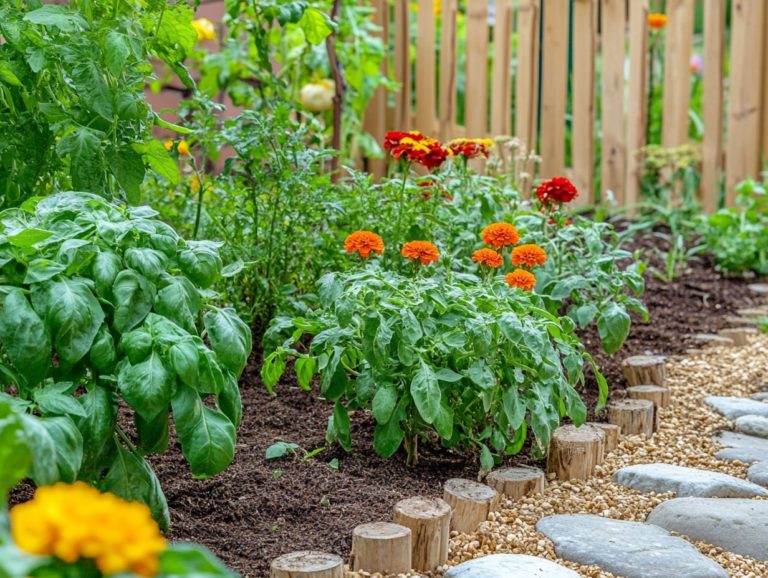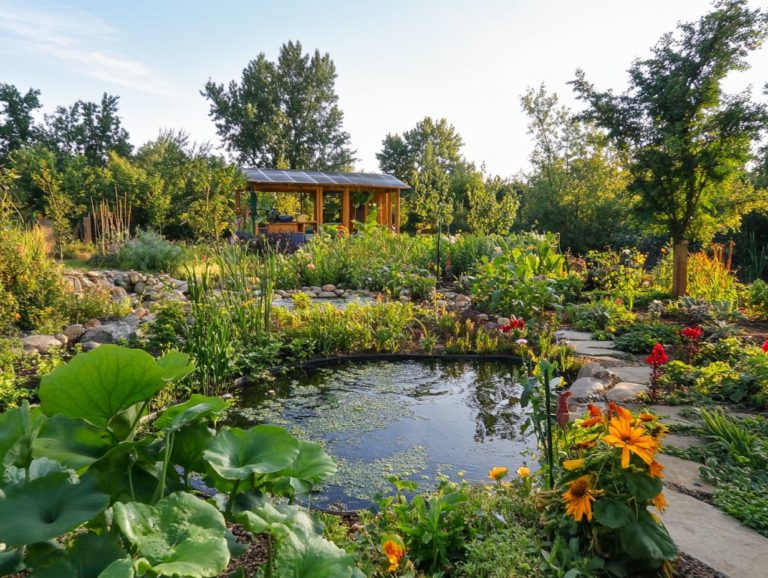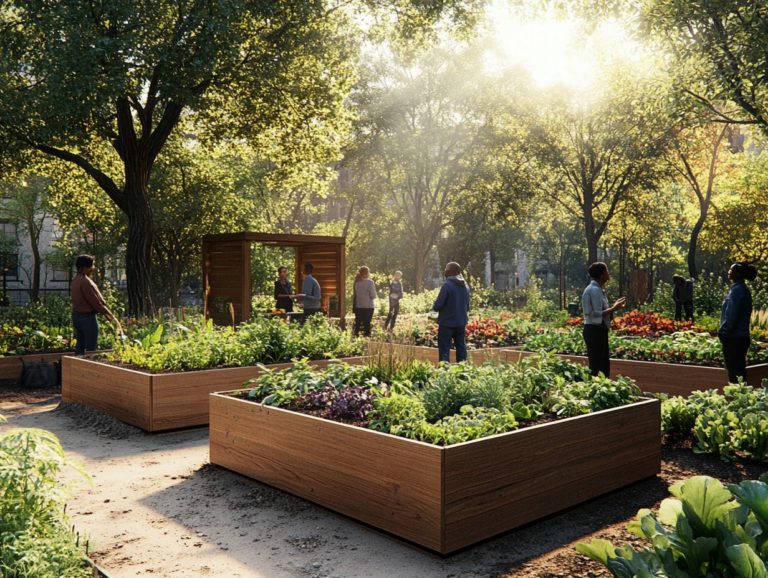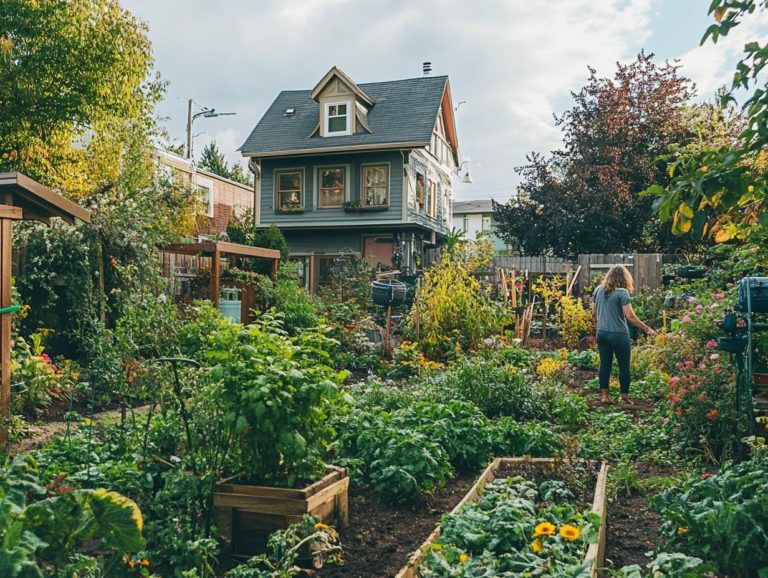What Are the Challenges of Urban Permaculture Gardening?
Urban permaculture gardening is a transformative strategy that seamlessly integrates sustainable practices into city life while nurturing environmental stewardship and community resilience.
As urban areas expand, you may encounter challenges like limited space, regulations, and resource constraints that can make gardening feel daunting. However, these obstacles can be overcome through innovative strategies tailored for urban settings.
This article delves into the myriad benefits of urban permaculture gardening, highlights common challenges you might face, and presents practical solutions to optimize your urban green space. Discover how you can make gardening thrive even in the heart of the concrete jungle!
Contents
- Key Takeaways:
- Benefits of Urban Permaculture Gardening
- Challenges of Urban Permaculture Gardening
- Strategies for Overcoming Challenges
- Frequently Asked Questions
- What are the challenges of urban permaculture gardening?
- How does limited space affect permaculture gardening?
- What impact does soil contamination have?
- How does restricted access to natural resources affect gardening?
- What are solutions for these challenges?
- Can urban permaculture gardening succeed despite these issues?
Key Takeaways:
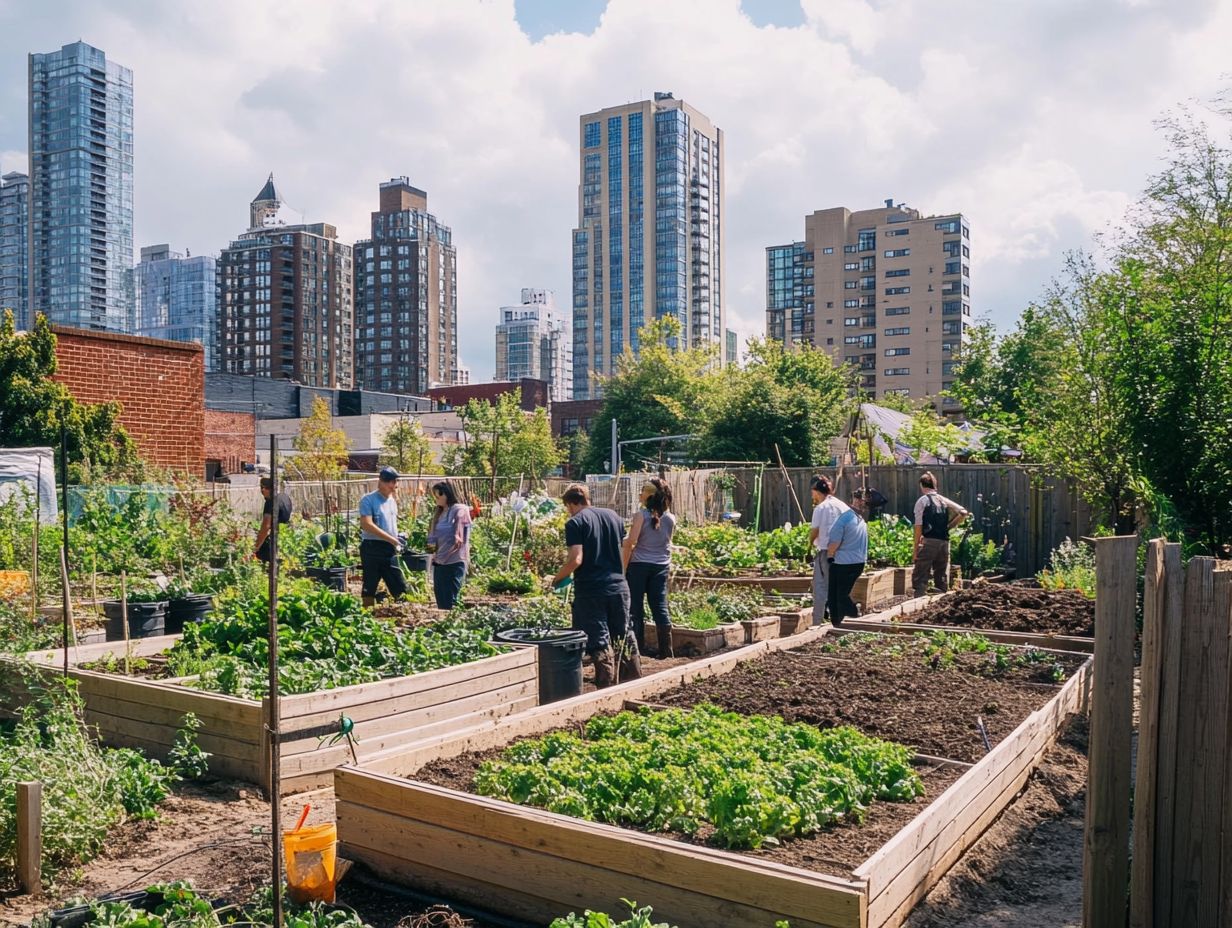
- Urban permaculture gardening faces challenges due to limited space and city regulations, but it offers numerous benefits for the environment and community.
- Maximizing small spaces and collaborating with local government and community are strategies that can help overcome challenges in urban permaculture gardening.
- Despite challenges, urban permaculture gardening has the potential for growth and impact, making it a worthwhile pursuit for those passionate about sustainability and community involvement.
Defining Urban Permaculture Gardening
Urban permaculture gardening offers you a holistic approach that blends urban farming practices with sustainable agriculture principles. This method allows you to cultivate productive, self-sustaining ecosystems even in limited urban spaces.
By focusing on food security, environmental benefits, and community building, you can significantly enhance local food production and bolster urban resilience. It encourages a strong connection between you and your environment, advocating for environmentally friendly technologies and sustainable practices that ensure long-term agricultural viability and biodiversity, even in less-than-ideal soil conditions.
Embracing innovative techniques like vertical gardens, rooftop farms, and community plots can help you adapt your gardening style to overcome urban challenges such as limited space and non-arable land. This approach aligns perfectly with public health policies by improving access to fresh produce, effectively addressing food deserts that often impact urban neighborhoods.
Urban permaculture brings communities together, creating exciting opportunities for collaboration on initiatives that promote food sovereignty and ecological stewardship.
Ultimately, it serves as a beacon for sustainable urban development, benefiting individuals while enhancing the overall urban infrastructure and resilience as we face the looming challenges of climate adaptation.
Benefits of Urban Permaculture Gardening
Urban permaculture gardening presents a wealth of benefits that significantly enhance economic development, environmental sustainability, and social cohesion essential elements for vibrant urban communities.
By embracing sustainable practices, urban agriculture not only bolsters food security but also nurtures local ownership, fostering a sense of community among urban gardeners and contributing to economic development.
These gardens also serve as important habitats for biodiversity, promote climate resilience, and create opportunities within the circular economy. Their multifaceted contributions underscore their pivotal role in nurturing sustainable cities.
Don’t wait! Start your urban permaculture journey now and transform your city into a greener space!
Environmental and Community Benefits
The environmental benefits of urban permaculture gardening are truly remarkable. By engaging in these practices, you contribute to better air quality, lower urban heat, and homes for various plants and animals, ultimately making your city more resilient against climate change.
Community gardens not only provide access to fresh produce but also serve as essential social hubs that foster cohesion and a sense of local ownership. These gardens align perfectly with public health initiatives aimed at enhancing community well-being while also addressing food distribution.
Imagine transforming vacant lots in urban neighborhoods into vibrant community gardens! This not only creates green spaces but also boosts community engagement.
These gardens often cultivate native plants that draw in pollinators, enriching local biodiversity. Initiatives like the Boston Urban Gardening Initiative have shown that integrating green spaces into cities can significantly mitigate heat island effects, leading to more pleasant urban environments.
These gardens often host educational workshops that promote sustainable practices, enabling individuals with knowledge about food security and environmental stewardship. This contributes to community resilience.
Challenges of Urban Permaculture Gardening
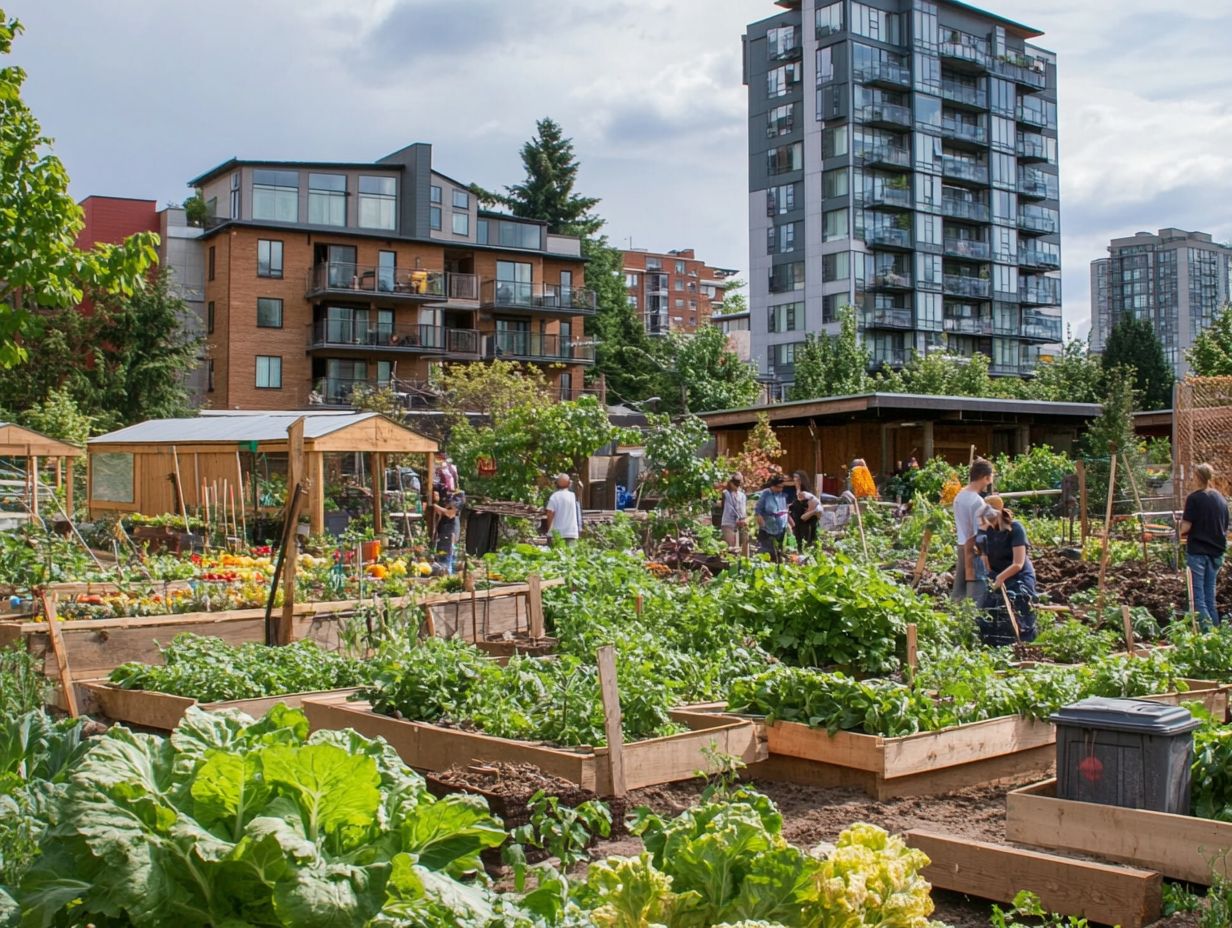
Despite its many advantages, urban permaculture gardening presents some challenges that you may encounter. Limited space, contaminated soil, and the complicated urban planning and permitting regulations can significantly impede your efforts. Understanding the role of urban permaculture in cities can help you navigate these obstacles and establish sustainable practices.
As an urban gardener, you might find yourself grappling with resource access. This can restrict your ability to cultivate flourishing urban agriculture systems, particularly in densely populated areas where land is at a premium.
Limited Space and Resources
Limited space in urban environments often stands as a formidable challenge to urban gardening. You are urged to innovate with techniques such as vertical farming and rooftop gardening. These methods not only optimize the available area but also encourage small business development and sustainable local food production.
Making the most of every inch of space becomes essential in cities where land is scarce. As an urban permaculture enthusiast, you might design multi-layered gardens that utilize walls, containers, and other surfaces for planting a variety of herbs, vegetables, and even fruits.
This creative approach not only bolsters food security but also opens doors for local entrepreneurs eager to launch small businesses focused on urban agriculture. By weaving community involvement and education into these urban farming initiatives, you can help cultivate a culture of sustainability that promotes healthier lifestyles in densely populated areas.
City Regulations and Zoning Restrictions
City regulations and zoning restrictions can significantly shape your urban permaculture gardening experience. They often present challenges when it comes to obtaining the necessary permits for your projects. These permitting regulations may arise from concerns about environmental contamination and urban planning protocols, which can either hinder or support your efforts to enhance urban resilience through sustainable food systems.
For instance, in some municipalities, strict zoning laws may prevent you and your neighbors from transforming vacant lots into productive gardens. This limits your opportunities for biodiversity and food production.
On the flip side, other cities have embraced supportive policies that encourage the development of green roofs and community gardens, recognizing their potential to mitigate urban heat and improve air quality.
By fostering a collaborative relationship between local governments and gardening initiatives, you and your fellow urban farmers can thrive, promoting healthier ecosystems and engaging your community in sustainability efforts. Ultimately, finding a balance between regulations and community needs is crucial for the flourishing of urban permaculture.
Strategies for Overcoming Challenges
To successfully navigate the complexities of urban permaculture gardening, you need to adopt strategic approaches that emphasize maximizing small spaces and fostering community collaboration. Both of these are vital for local food production in urban settings while reducing pesticide exposure.
By leveraging environmental technologies and enhancing urban infrastructure, you can establish more sustainable practices that effectively address the unique challenges of urban agriculture and ensure water access.
Maximizing Small Spaces
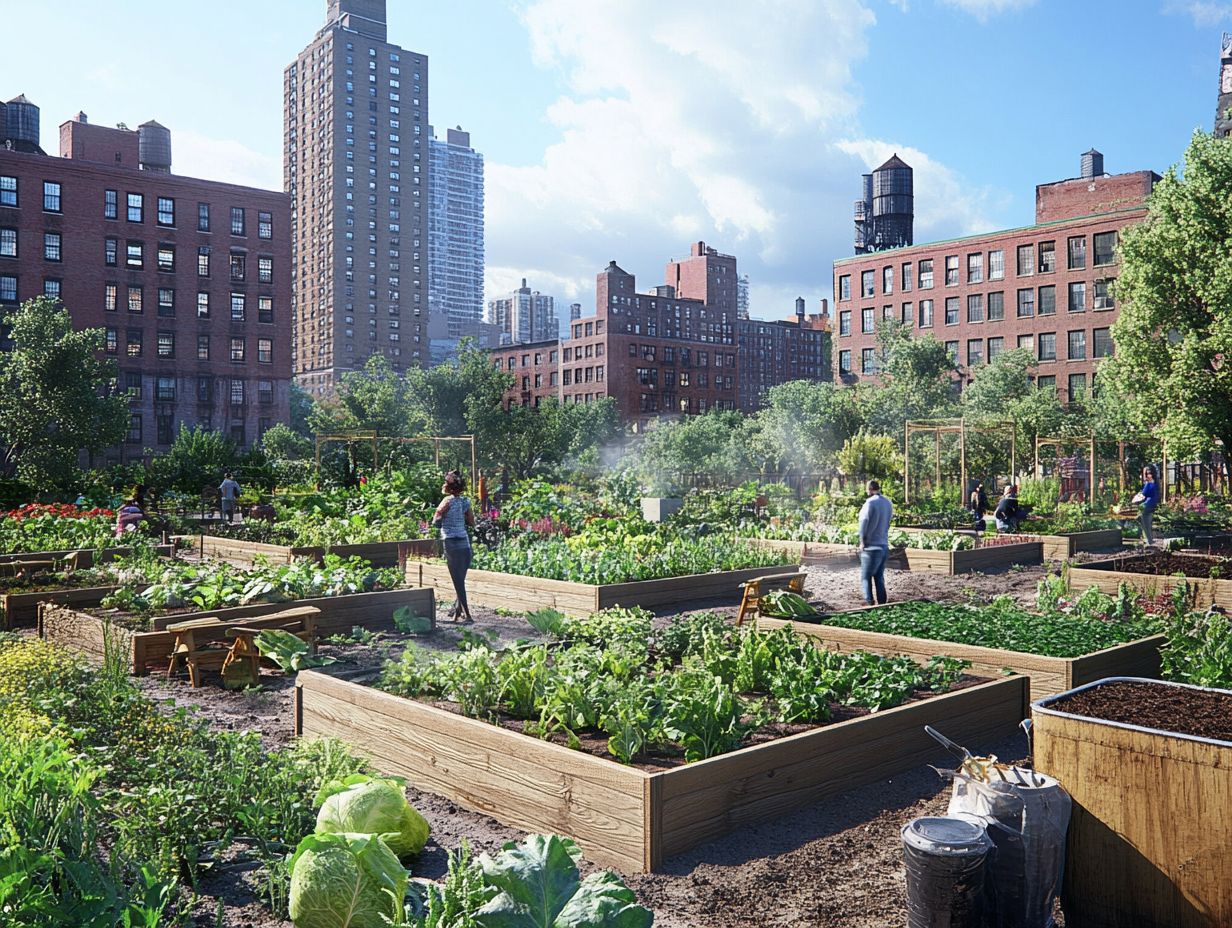
Maximizing small spaces in urban gardening is within your reach through innovative methods such as vertical farming and rooftop gardening. These techniques enable you to make the most of limited land.
By embracing organic micro-farming practices, you not only boost food production but also enhance urban infrastructure and aesthetics. Utilizing hydroponic systems and wall-mounted planters allows you to transform even the smallest balconies or narrow alleyways into vibrant green spaces.
Incorporating companion planting into your setup can increase biodiversity and reduce reliance on chemical inputs. Community gardens allow you and your neighbors to pool resources and knowledge while producing fresh, organic crops together.
With the integration of smart gardening technologies, monitoring growth and optimizing resources is entirely achievable. This creates a sustainable urban ecosystem that nourishes its inhabitants and enriches the urban landscape.
Working with Local Government and Community in Urban Agriculture
Working collaboratively with local government and community members is vital for the success of urban permaculture gardening. This approach fosters local ownership and aligns seamlessly with public health policies designed to enhance community well-being.
By engaging urban planners and residents in the planning process, you have the power to shape sustainable practices that address the unique needs of neighborhoods. This synergy encourages environmental stewardship and cultivates a stronger sense of community.
Involving diverse stakeholders such as local businesses and schools allows initiatives to leverage a wealth of resources and knowledge. This paves the way for innovative solutions tailored to urban settings.
When community members feel a sense of investment, they are far more likely to engage actively in gardening projects, thus ensuring their long-term sustainability. This collaborative approach can create green spaces that not only improve air quality and biodiversity but also serve as educational hubs, raising awareness about healthy living and food systems among residents.
Potential for Growth and Impact
The potential for growth and impact of urban permaculture gardening is immense. It enhances community resilience and makes a meaningful contribution to urban infrastructure and local food production systems.
By focusing on economic benefits and sustainable practices, you can help catalyze significant transformations in urban food systems. As cities continue to grow, integrating permaculture principles into urban planning promotes biodiversity and efficient space utilization.
This approach turns underutilized areas into vibrant green zones. Your local community stands to gain tremendously with increased access to fresh produce, reducing reliance on long supply chains that often take a toll on the environment.
This movement also fosters job creation within the local economy, giving rise to various ventures from rooftop farms to community-supported agriculture. The ripple effect of these initiatives can lead to healthier lifestyles, stronger community ties, and a heightened emphasis on sustainability, reshaping urban living for generations to come.
Frequently Asked Questions
Join the movement today and help transform your community into a green oasis!
What are the challenges of urban permaculture gardening?
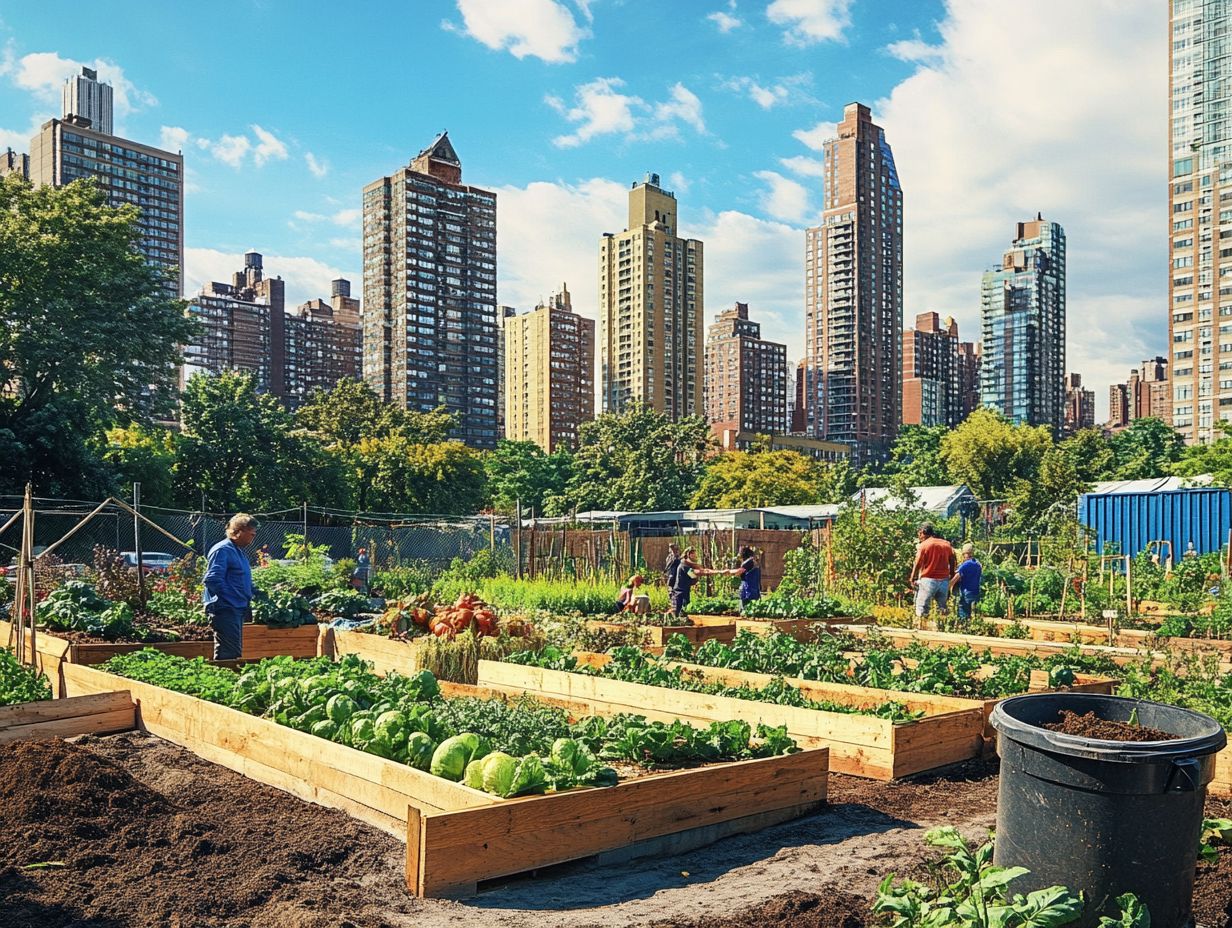
Urban permaculture gardening faces challenges like limited space, soil contamination, and restricted access to natural resources. To learn more about these issues, check out common challenges in permaculture gardening. These obstacles can make gardening in the city tough.
How does limited space affect permaculture gardening?
Limited space in cities restricts the area available for planting. This can also limit the variety of crops you can grow.
What impact does soil contamination have?
Soil contamination is a serious issue. It can harm plants and restrict the types of vegetation you can cultivate.
How does restricted access to natural resources affect gardening?
When access to water and sunlight is limited, urban gardens struggle to thrive. This can lead to lower harvests.
What are solutions for these challenges?
You can tackle the challenges of urban permaculture gardening by using vertical gardening methods, urban composting, and rainwater harvesting. These strategies help maximize space and resources.
Can urban permaculture gardening succeed despite these issues?
Absolutely! With careful planning and sustainable practices, urban permaculture gardens can flourish. Embrace creative solutions for a thriving urban garden!

